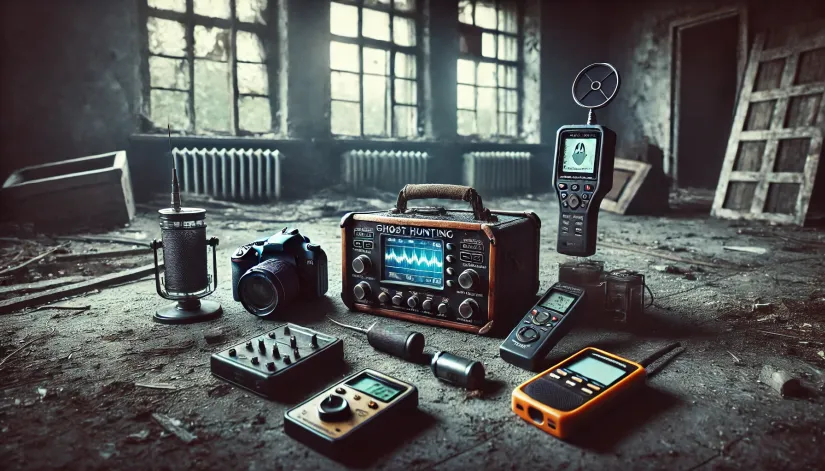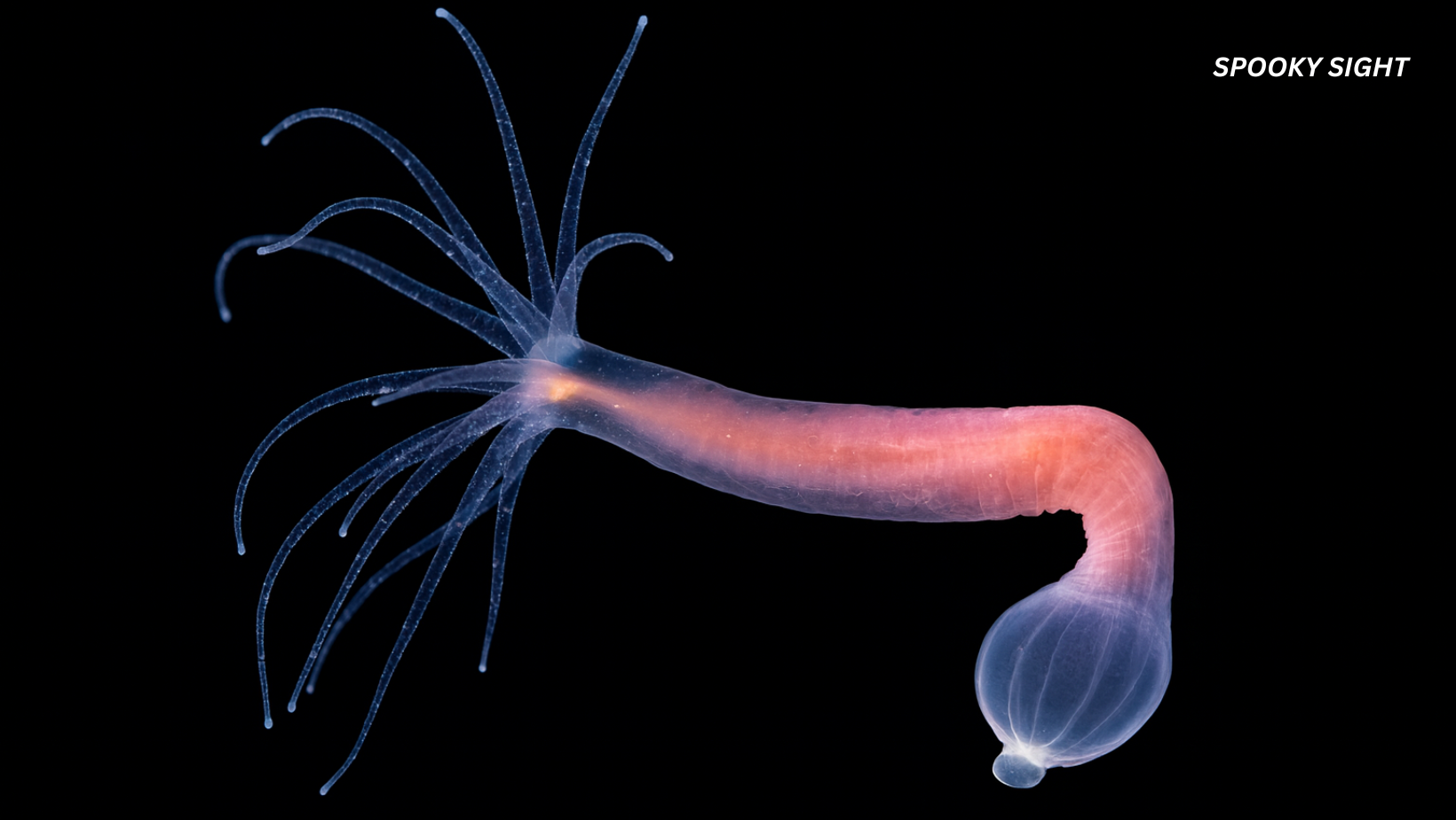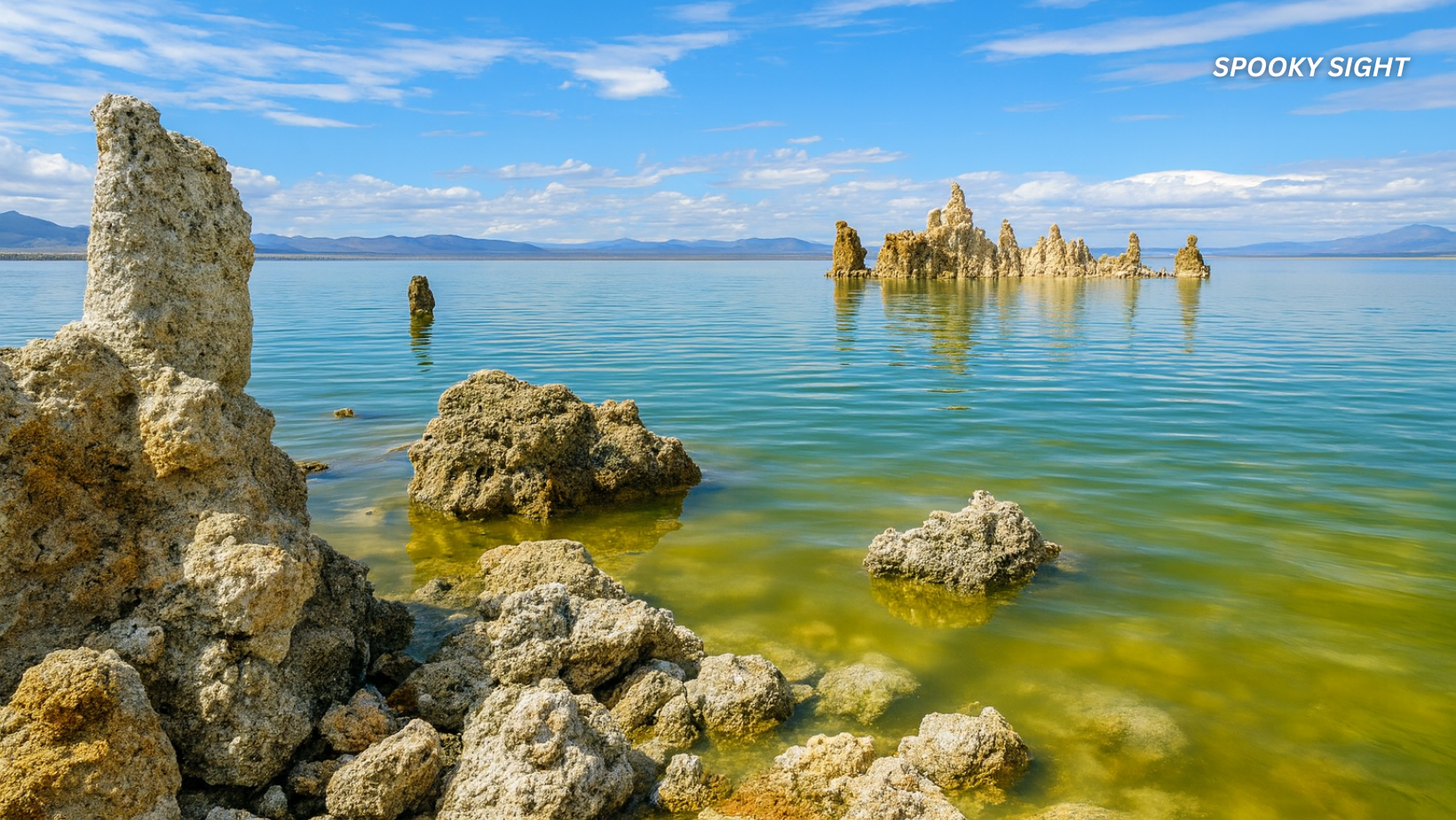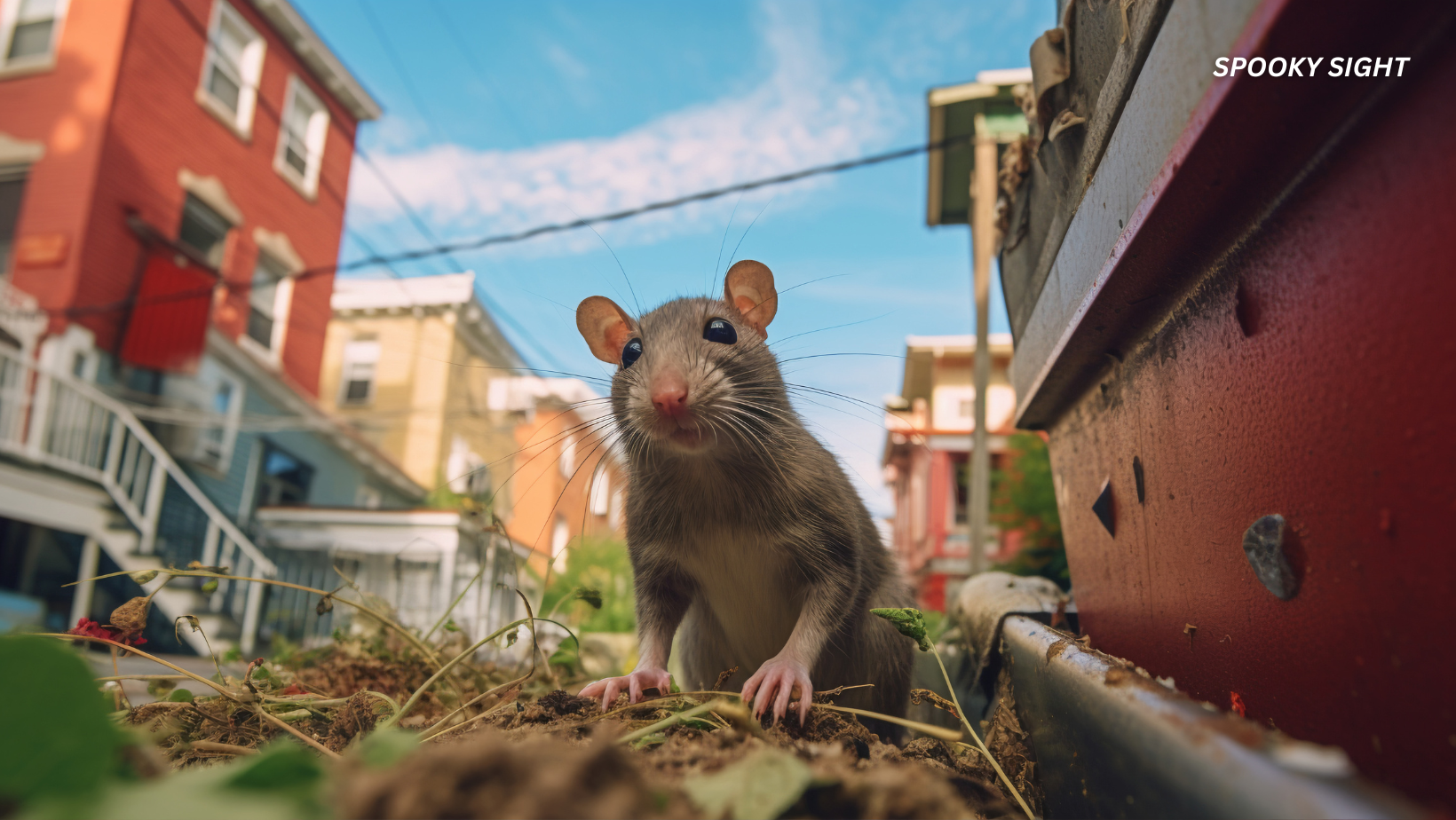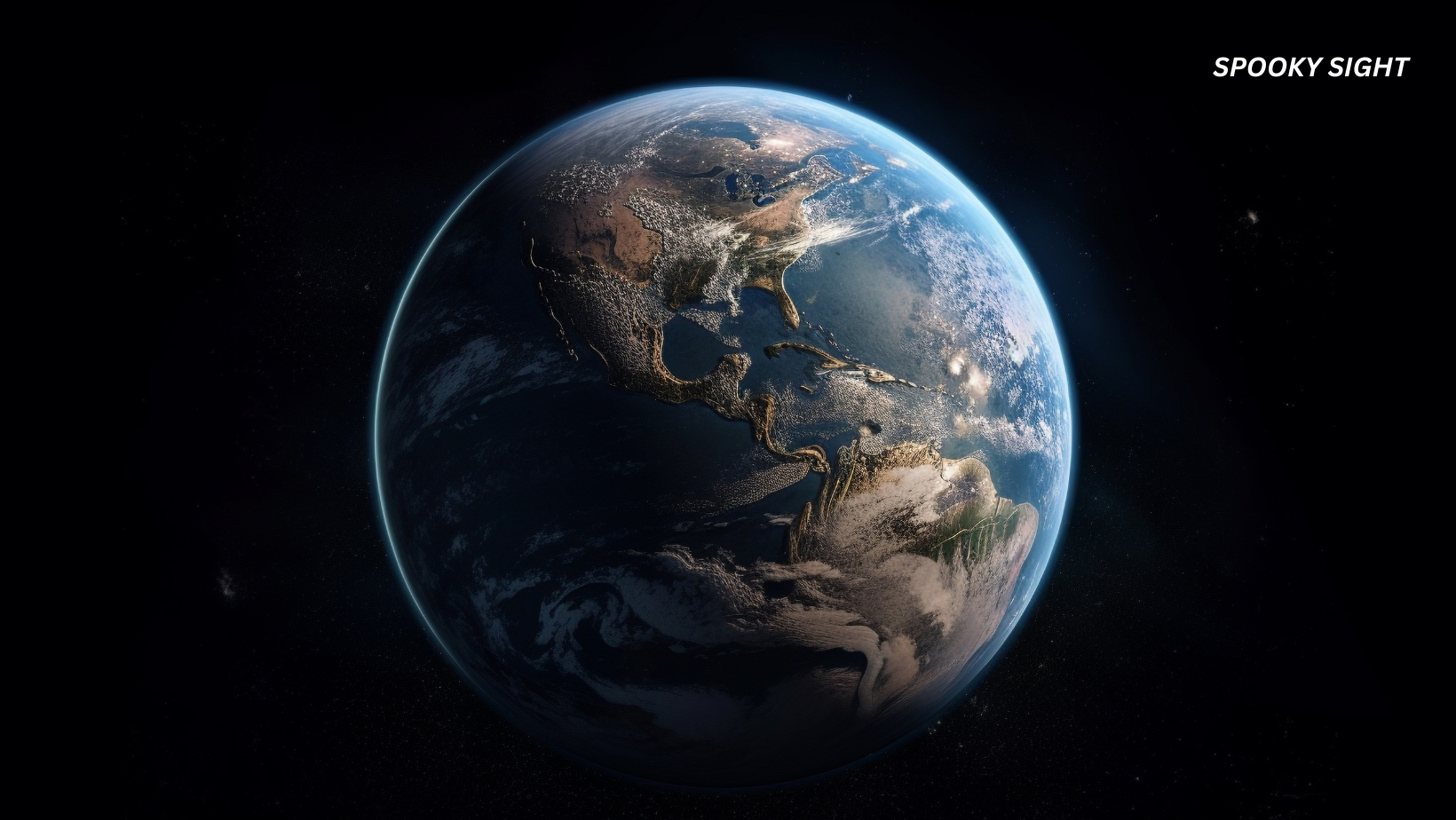Here at SpookySight, we’ve been getting a ton of questions from fellow ghost hunters about the must-have ghost hunting equipment—whether you’re just starting out or have been in the game for a while.
And we agree. With so many gadgets and tools out there, it’s easy to feel overwhelmed. So, we figured it’s about time we laid it all out for you.
In this article, we’re breaking down the gear we swear by and giving you the lowdown on everything you need to kick off your next adventure.
Whether you’re hunting for your first EVP or you’ve already got a few ghost stories under your belt, we’ve got you covered!
In this article:
Basic Ghost Hunting Equipment
When it comes to chasing ghosts (or other paranormal events), having some sort of basic equipment can make all the difference. These are the go-to tools that every investigator—whether a newbie or a seasoned pro—should have in their arsenal.
Here is our complete list of the essentials:
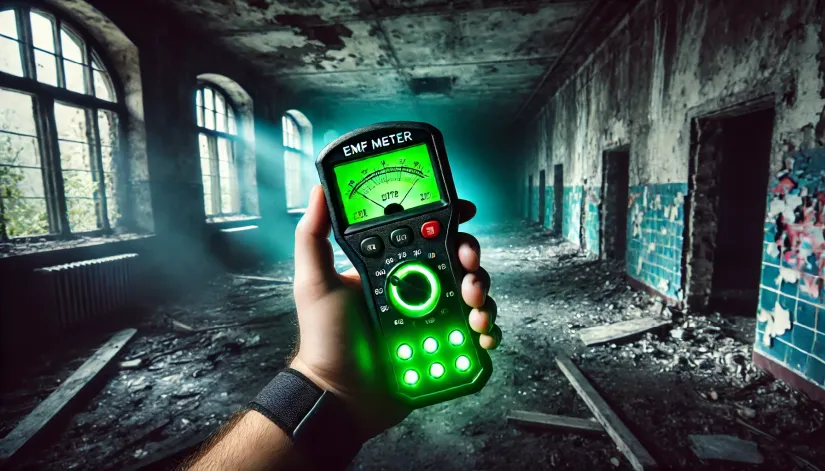
EMF Meter
Cost Range: $40 – $200
Ease of Use: Beginner-friendly. Relatively simple to operate with basic instructions.
The EMF meter is a staple in any ghost hunter’s toolkit. It’s a handy device that detects fluctuations in electromagnetic fields.
Why is that important? Because these fluctuations may indicate signs of paranormal activity. You’ll often see these meters lighting up when something unexplained is nearby.
However, there are a few different types of EMF meters out there. For example, K-II meters, Trifield meters, and Mel Meters. Each has its own perks. But they all serve the same basic purpose.
If you’re new to ghost hunting, the K-II meter is a solid choice—it’s simple to operate and doesn’t require much experience to get started.
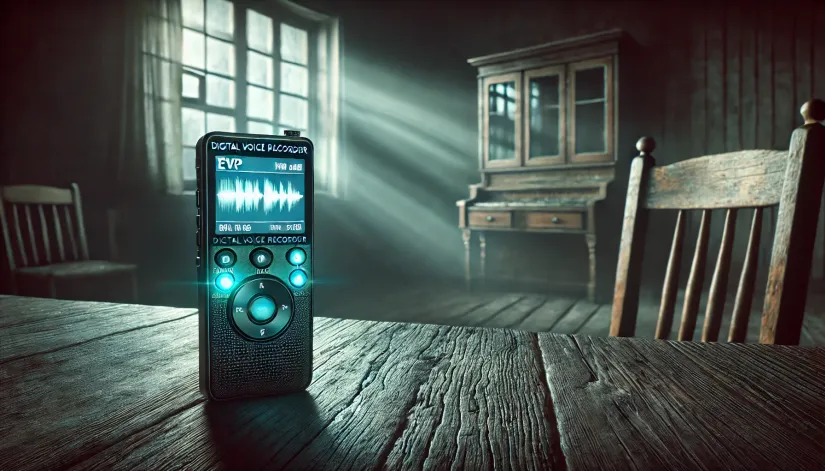
Digital Voice Recorder
Cost Range: $20 – $100
Ease of Use: Easy to use. A good choice for both beginners and professionals.
Another essential ghost hunting equipment is the digital voice recorder.
Capturing EVPs (Electronic Voice Phenomena) is one of the most exciting parts of chasing ghosts. A digital voice recorder is the tool for the job.
EVPs are mysterious voices (or sounds) that you don’t hear in real-time. Still, they may show up during playback. It’s a little creepy, I know, but that’s what we’re here for, right?
Most digital voice recorders come with features such as noise reduction and enhanced microphone sensitivity (all great if you want to pick up even the faintest of whispers.
The recorder can also be used during witness interviews or simply to record your thoughts or observations.
Plus, operating one is not rocket science, either.
Digital Camera
Cost Range: $100 – $1000+
Ease of Use: Varies by model. Point-and-shoot cameras are easier for beginners. DSLRs require some experience.
Your basic ghost hunting kit MUST include a digital camera. Even a cheaper one can do the trick if you can’t afford to invest a lot of money in a professional camera.
A digital camera is needed to capture visual evidence. Whether it’s strange orbs, unexplained shadows, or even a full-blown apparition.
You can use anything from a basic point-and-shoot to a more advanced DSLR or mirrorless camera. A standard digital camera with a good ISO range should do the trick if you’re just starting out (especially in low-light conditions).
For best results, make sure your camera’s settings are optimized for the environment you’re investigating. For instance, high ISO settings are great for dark places.
Also, keep an eye on the potential noise in your images. Wrong camera settings are typically how people end up with “fake” ghost photos.
Tip from the SpookySight team:
Always take multiple shots in quick succession. Sometimes, anomalies appear in just one frame. A bunch of photos gives you a better chance of capturing something remarkable.
Infrared (IR) Thermometer
Cost Range: $20 – $100
Ease of Use: Very user-friendly. Point-and-shoot operation.
An infrared (IR) thermometer is another necessary piece of ghost hunting equipment.
Why do you need it? To measure temperature changes that could indicate paranormal activity. Just aim, click, and you’ll get an instant reading.
Many ghost hunters use this device to track down areas of sudden temperature drops and cold spots (which might indicate that a spirit is nearby).
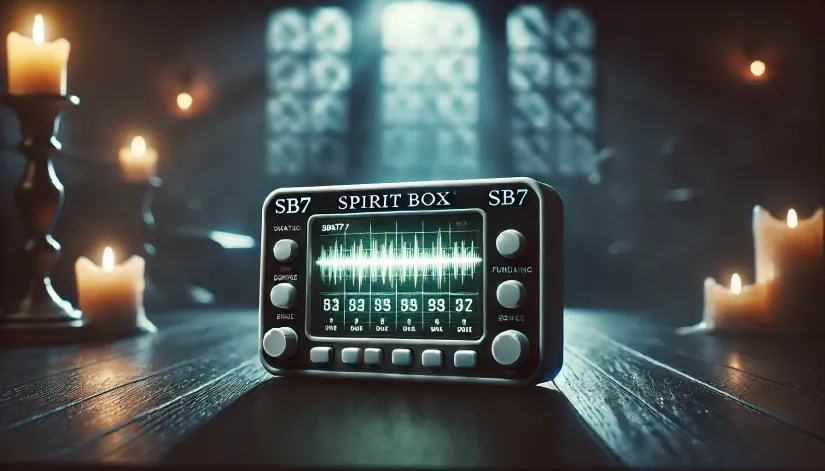
Spirit Box (SB7 or SB11)
Cost Range: $50 – $150
Ease of Use: Requires some experience to interpret results. Intermediate level.
The spirit box is another must-have ghost hunting tool. You use it to scan radio frequencies to produce white noise.
What do I mean by that? Rapidly scanning radio frequencies may allow spirits to form words you can actually hear in real-time.
The spirit box comes in different models. Some of the most popular are the SB7 and SB11. And each can offer a wide range of settings to tweak during an investigation.
Tip from the SpookySight team:
Spirit boxes do require some experience to intercept the results. Don’t be discouraged if it seems tricky at first.
Night Vision Camcorder
Cost Range: $200 – $1000+
Ease of Use: Intermediate to advanced. Requires knowledge of camera settings and infrared use.
Some other guides will probably tell you that a night vision camera is not basic ghost hunting equipment. That is more of an advanced tool.
Let me ask you this: When does most paranormal activity happen? At night, correct? So, how are you supposed to capture anything in total darkness?
That’s why, for us, a night vision camcorder isn’t just practical—it’s essential ghost hunting equipment.
These camcorders use infrared technology to record in the dark. The more advanced models even come with external IR lights for better visibility.
Flashlights
Cost Range: $10 – $50
Ease of Use: Simple to use; suitable for all levels.
“Don’t forget your flashlight!” OK, it may sound like a joke, dumb advice, or something anyone could have thought of. But you would be surprised how many ghost hunters (especially beginners) don’t bring a flashlight.
Trust me. You should get one even during a daylight investigation. It’s one of the most important tools in your ghost hunting equipment kit.
Not only does it help you navigate darker environments, but it’s also used for signaling and communication experiments. For example, you can use twist-on flashlights to see if spirits can interact by turning the light on and off.
Tip from the SpookySight team:
We recommend tactical LED flashlights because they’re durable and provide strong, focused light.
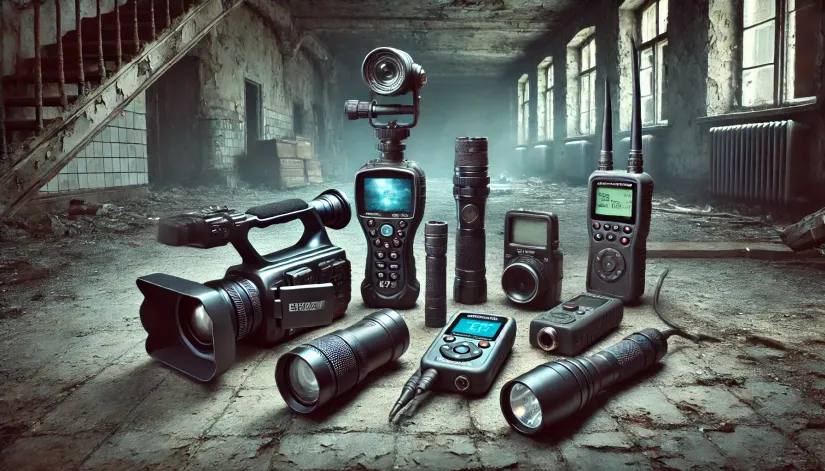
Advanced Ghost Haunting Equipment
For those who are serious about paranormal investigations and want to take their investigations to the next level, advanced ghost hunting equipment is where things get really interesting.
We’re talking about more professional stuff. Tools that can pick up on subtle anomalies and provide evidence that might slip through the cracks with basic gear.
Here is our complete advanced ghost hunting equipment list:
Full-Spectrum Camera
Cost Range: $200 – $600+
Ease of Use: Intermediate. Some understanding of the light spectrum is required.
There’s a big difference between a full-spectrum camera and a regular one. This one can capture images across the entire light spectrum, including ultraviolet (UV) and infrared (IR) light.
It’s simply better to reveal any potential anomalies that don’t show up in traditional photos (think of orbs, shadows, and even full apparitions).
We recommend full-spectrum cameras in locations where standard equipment fails to pick up activity.
Thermal Imaging Camera
Cost Range: $300 – $3000+
Ease of Use: Advanced. Requires training to interpret thermal images correctly.
A thermal imaging camera is one of the most advanced ghost hunting tools in the ghost hunter’s arsenal. It can detect even the slightest heat signatures and visualize temperature differences.
In this category, FLIR cameras are among the most popular models in this category. They can offer excellent precision and reliability.
However, we suggest using thermal imaging cameras in areas with little to no light and minimal background noise for best results. This can reduce false positives and make it easier to spot genuine anomalies.
Motion Sensor/Trigger Object
Cost Range: $50 – $200
Ease of Use: Simple to set up. Accessible for all levels.
Motion sensors and trigger objects are excellent tools for monitoring movement in a room.
Motion sensors—like Passive Infrared (PIR) sensors and REM pods—can alert you to any movement in their field. Similarly, trigger objects—such as toys, coins, or other items that may attract spirits—can be paired with motion sensors to detect when something interacts with them.
So, why are these relatively inexpensive and easy-to-set-up tools listed under advanced ghost hunting equipment? It’s because they do more than just detect a spirit’s presence. They let you interact with and monitor specific movements in real time.
Unlike the basic ghost hunting equipment (which typically captures evidence after the fact), motion sensors allow you to actively engage with the environment during an investigation.
This kind of real-time interaction can be intense and potentially dangerous for beginners (or even those with some experience).
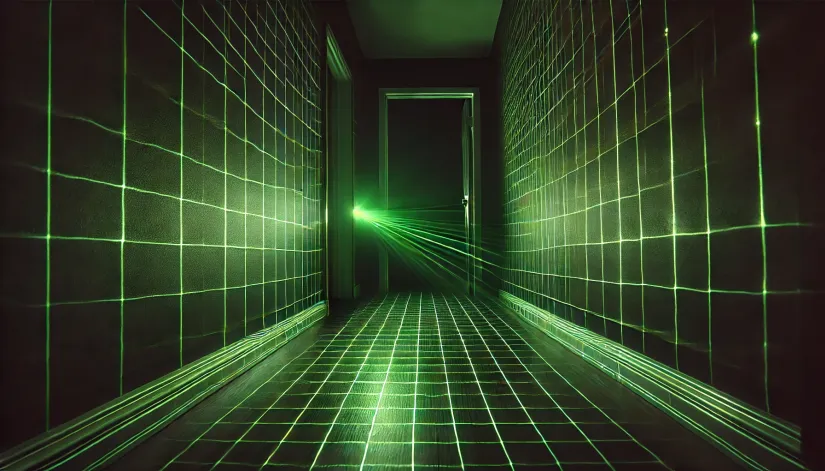
Laser Grid Pen
Cost Range: $20 – $50
Ease of Use: Easy to use. Requires basic setup.
The laser grid pen is a simple yet effective instrument that projects a grid of laser points across a room. If anything—or anyone—crosses the grid, it disrupts the pattern (which can help you detect movement or distortions that aren’t visible to the naked eye).
Setting up the laser grid is straightforward. We use it in large, open spaces where we have to monitor a wide area.
Data Loggers
Cost Range: $50 – $300
Ease of Use: Intermediate. Some understanding of environmental data is helpful.
Data loggers don’t really do much for a beginner ghost hunter. However, they can be invaluable for long-term investigations where you must track environmental data over time.
We use them for anything. From recording temperature and humidity to barometric pressure. All these factors may be necessary for spotting patterns that correlate with paranormal activity.
Static Electricity Detector (E-Field Meter)
Cost Range: $50 – $150
Ease of Use: Intermediate. Easy to operate but requires some interpretation.
The static electricity detector (or E-Field meter) measures static electricity in the environment. It’s more of a niche instrument that most ghost hunters don’t really need.
What’s an E-Field meter good for? Well, some say spirits can manipulate static electricity in a small area (for example, in a room). But that’s typically noticeable in older buildings where electrical interferences are minimal.
Otherwise, the E-Field meter will pick up readings unrelated to a potential paranormal phenomenon.
SLS Camera (Structured Light Sensor)
Cost Range: $500 – $1500
Ease of Use: Advanced. Requires experience to operate and interpret results.
An SLS camera can be a costly investment. Some of the cheaper models typically cost as much as $500 (to put it in perspective, with that money, you can probably assemble your entire beginner ghost-hunting kit).
However, it can also be pretty handy as an advanced piece of equipment.
The SLS camera uses infrared light and a depth sensor to map out humanoid shapes (sometimes showing silhouettes not visible to the naked eye).
When it detects something, the SLS camera will display it as a stick figure on the screen. You can then track the entity’s shape and movements in real time.
Documentation and Analysis Tools
Now, that you’ve gathered all your evidence, get ready for the real research work—analyzing and documenting what you’ve captured.
However, while these documentation and analysis tools can significantly help your investigation, they aren’t necessarily must-haves for every ghost hunter—especially if you’re just getting started.
For example, a laptop or tablet can be incredibly useful for reviewing footage on-site or keeping organized notes. But you could just as easily do this at home on a desktop computer.
An external hard drive is excellent for backing up large amounts of data. But your laptop’s internal storage might suffice if you only capture a few short videos or photos.
So, by no means don’t feel pressured into buying every piece of tech right away.
Laptop/Tablets
Cost Range: $300 – $2000+
Ease of Use: Varies by software. Easy to use with some basic computer skills.
When it comes to ghost hunting equipment, a laptop (or tablet) may make your life much easier. Especially for those who want to analyze data on the go, review footage, or keep detailed notes during investigations.
Why do we like having a portable device? Because we can quickly check photos, videos, and audio recordings in the field. This way, our team can spot anything unusual while it’s still fresh.
As a side note here, the software you run on your laptop or tablet is as important as the device itself. Programs like Adobe Premiere (for video editing) or Audacity for (audio analysis) can come in handy (but more on that below).
External Hard Drives
Cost Range: $50 – $200
Ease of Use: Very easy to use. Plug-and-play functionality.
An external hard drive can be a great addition to your ghost hunting equipment kit. Especially when dealing with gigabytes of data—videos, audio recordings, and high-resolution photos.
For most of you, a 1TB or 2TB external hard drive should be more than enough. However, if you’re regularly capturing high-definition video or conducting long-term investigations, you might want to opt for something larger.
Tip from the SpookySight team:
You can also get an extra external hard drive. When working on the field, you are exposed to weather and other factors you can’t control. An extra backup can keep your data safe, even if something happens to the primary drive.
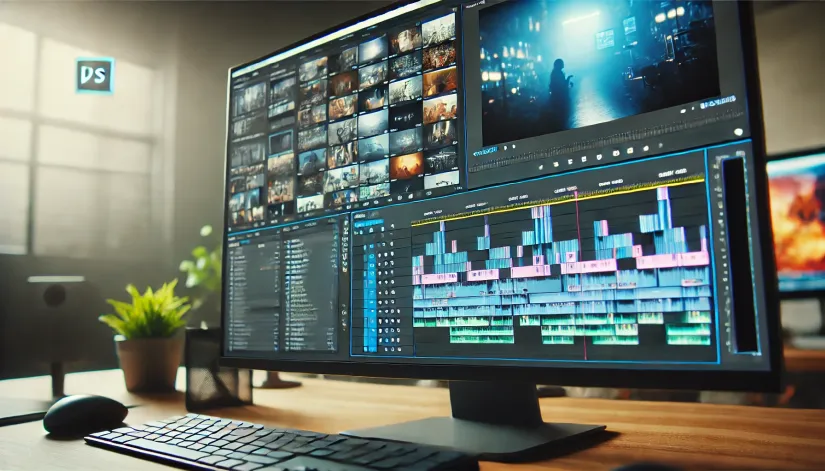
Video Editing Software
Cost Range: $0 – $500 (depending on the software)
Ease of Use: Varies. Beginner-friendly to advanced, depending on the software.
Once you’ve captured your footage, the next step is to sift through it with video editing software. You can enhance images, isolate potential evidence, and create professional-looking presentations of your findings.
Popular programs include Adobe Premiere Pro for its advanced features and ease of use and DaVinci Resolve for those looking for a free alternative.
We recommend starting with software that matches your skill level. If you’re new to video editing, look for a program with a user-friendly interface (maybe iMovie or Adobe Premiere Elements). That might be a better fit before moving on to more advanced options.
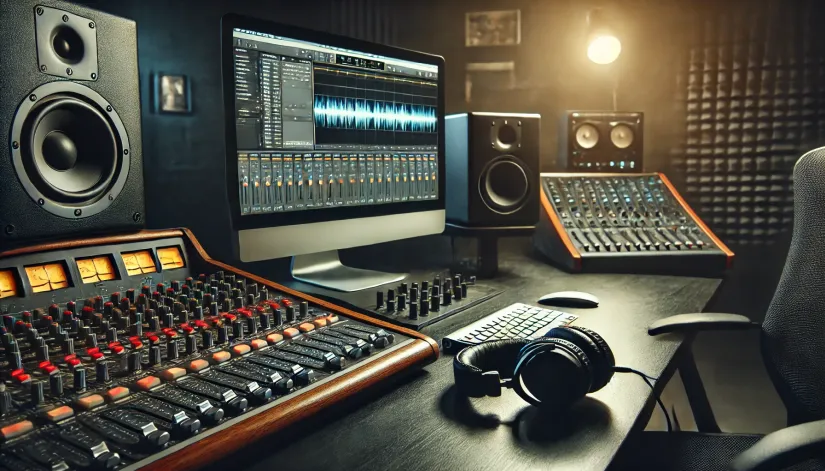
Audio Analysis Software
Cost Range: $0 – $250
Ease of Use: Varies by software. Generally, it requires some familiarity with audio editing.
Capturing EVPs is only half the battle—the other half is analyzing what you’ve recorded. Audio analysis software helps you clean up audio, remove background noise, and highlight potential EVPs.
Audacity (free) and Adobe Audition (paid) are two good options among ghost hunters for their powerful editing tools.
Miscellaneous Ghost Hunting Equipment
Most ghost hunting equipment guides don’t usually go into this much detail. But we think that some of these miscellaneous tools can help you out… a lot.
Protective Gear
Cost Range: $20 – $100
Ease of Use: Doesn’t apply. It’s just general safety gear.
Safety should always be a top priority. Particularly when investigating potentially hazardous environments (like abandoned buildings or remote outdoor locations).
However, you don’t have to go overboard with the protective gear. Get yourself a pair of gloves, some masks (to protect you from dust or mold in old, poorly ventilated structures), and a basic first aid kit.
Notebooks and Pens
Cost Range: $5 – $20
Ease of Use: Everyone knows how to use a notebook and a pen.
It’s easy to overlook the simplicity and reliability of a bunch of notebooks and pens.
But these tools can be indispensable for documenting your observations, times, and conditions during investigations. Plus, whatever you write down on paper is easy to review later on.
Walkie-Talkies
Cost Range: $30 – $150
Ease of Use: Simple to operate.
You don’t need a walkie-talkie if you are alone. But when working with someone else, staying in touch with your team can be important.
Great, but why can’t I just use my smartphone? Great question!
Walkie-talkies don’t rely on cell service or Wi-Fi (which can be spotty or non-existent in remote or underground locations like abandoned buildings, basements, or rural areas). Instead, they work on radio frequencies. So, as long as you’re within range, you’ll have a reliable line of communication.
Power Banks/Extra Batteries
Cost Range: $20 – $100
Ease of Use: Very easy. Simple plug-and-charge functionality.
Again, if you’re just taking pictures hoping to catch some sort of paranormal activity, these are unnecessary.
However, nothing cuts an investigation short like a dead battery. Whether it’s your camera, voice recorder, or walkie-talkie, backup power can help during more extended investigations.
Tip from the SpookySight team:
A good rule of thumb is to choose a power bank that can fully recharge your devices at least twice.
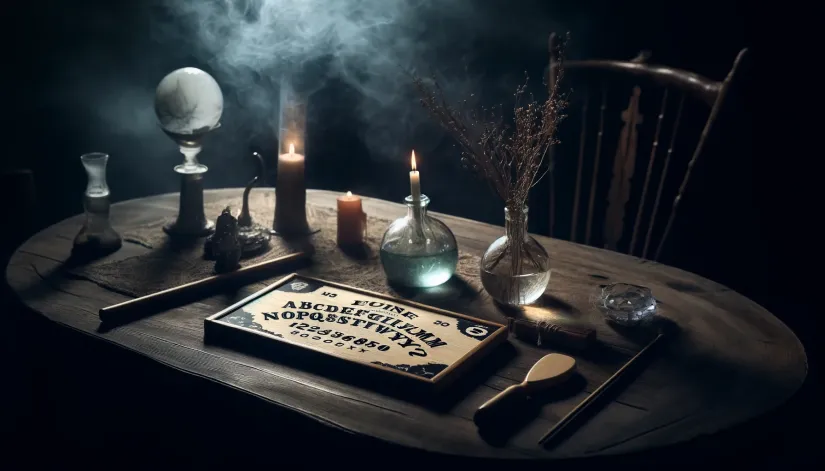
Experimental Tools
The ghost hunting equipment below can be somewhat controversial and isn’t universally embraced by the entire paranormal investigation community. So, it’s pretty much down to personal choice and preference.
We’ve included these experimental tools on our list of ghost hunting equipment because we believe in exploring all possibilities.
Ultimately, it’s up to you to decide what feels right for your investigations. If you’re curious, try them and see if they resonate with your approach. Or stick with the basics if that’s more your style.
Dowsing Rods
Cost Range: $10 – $50
Ease of Use: Relatively easy to use.
Dowsing rods have been used for centuries in the search for water, minerals, and, more recently, spirits. They’re a traditional tool that’s still popular in ghost hunting for locating energy fields or spirits.
Ouija Board
Cost Range: $20 – $50
Ease of Use: Beginner-friendly but requires caution.
The Ouija board is perhaps the most controversial one. It’s typically used for spirit communication by spelling out messages through the movement of a planchette across the board.
However, while some swear by its effectiveness, others try to avoid it due to its associations with darker energies.
ParaScope
Cost Range: $200 – $500
Ease of Use: For professional ghost hunters only. Requires understanding of multiple environmental metrics.
The ParaScope can be both expensive and controversial. The perfect combination, right?
Nevertheless, it can be quite fascinating. It can simultaneously measure a wide range of environmental factors, looking for correlations that might indicate paranormal activity.
In a way, it’s like having multiple sensors in one, monitoring everything from temperature and humidity to electromagnetic fields. And that’s precisely what makes it so controversial.
Many ghost hunters (our team included) think the data it provides can be too broad (or difficult) to interpret accurately. Simply put, it can hit you with a bunch of “false positives.”
Crystal Pendulums
Cost Range: $5 – $50
Ease of Use: Easy to use but requires practice for effective communication.
And now, rounding out our list of ghost hunting equipment: crystal pendulums.
Traditionally used in divination practices, these crystals have also carved out a niche in modern ghost hunting.
Their simplicity is part of their charm—just ask yes/no questions and watch the pendulum’s movements. The idea is that spirits can influence the swings, providing you with answers.
But here’s the flip side: Crystal pendulums are rooted in old-school divination. Which means they don’t carry the same scientific credibility as other instruments from this list.
Even if you get compelling results, skeptics will likely dismiss them as coincidence or subconscious influence.

